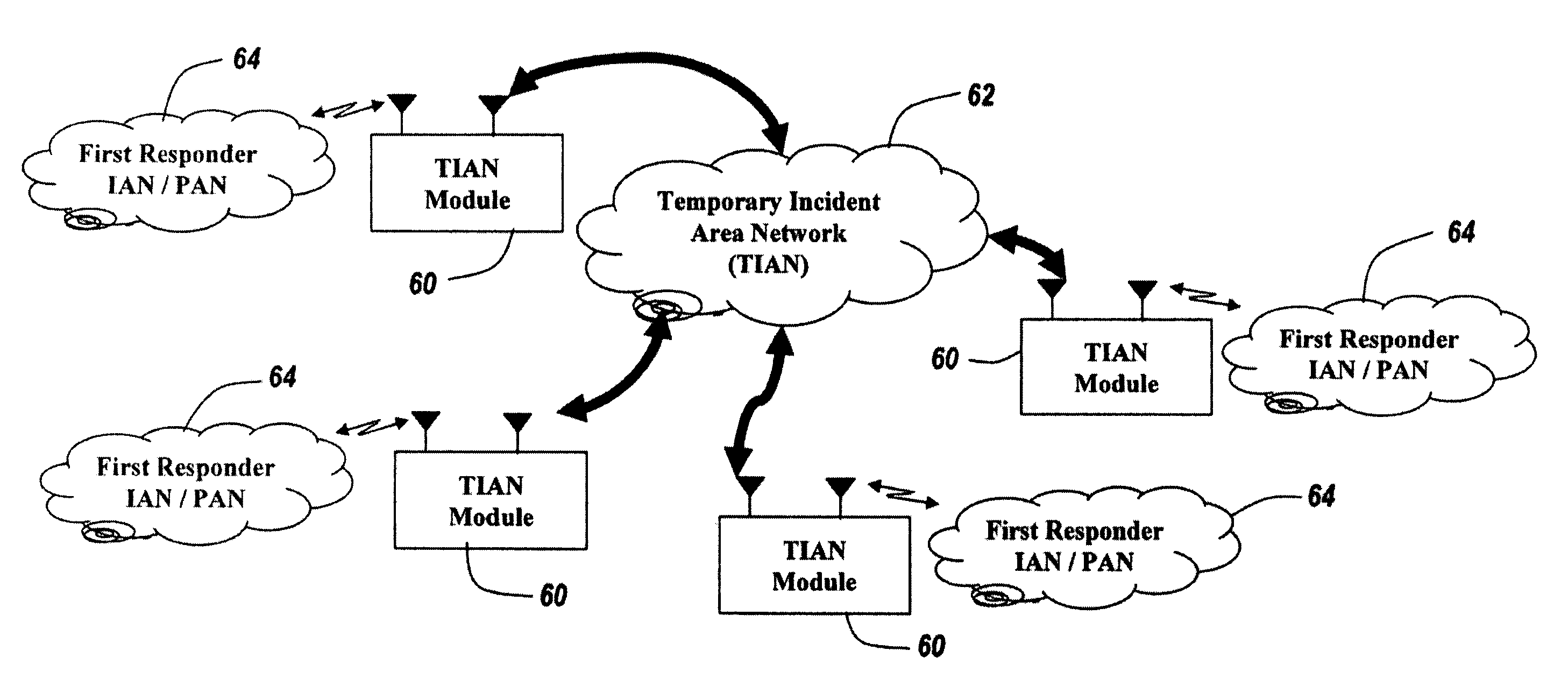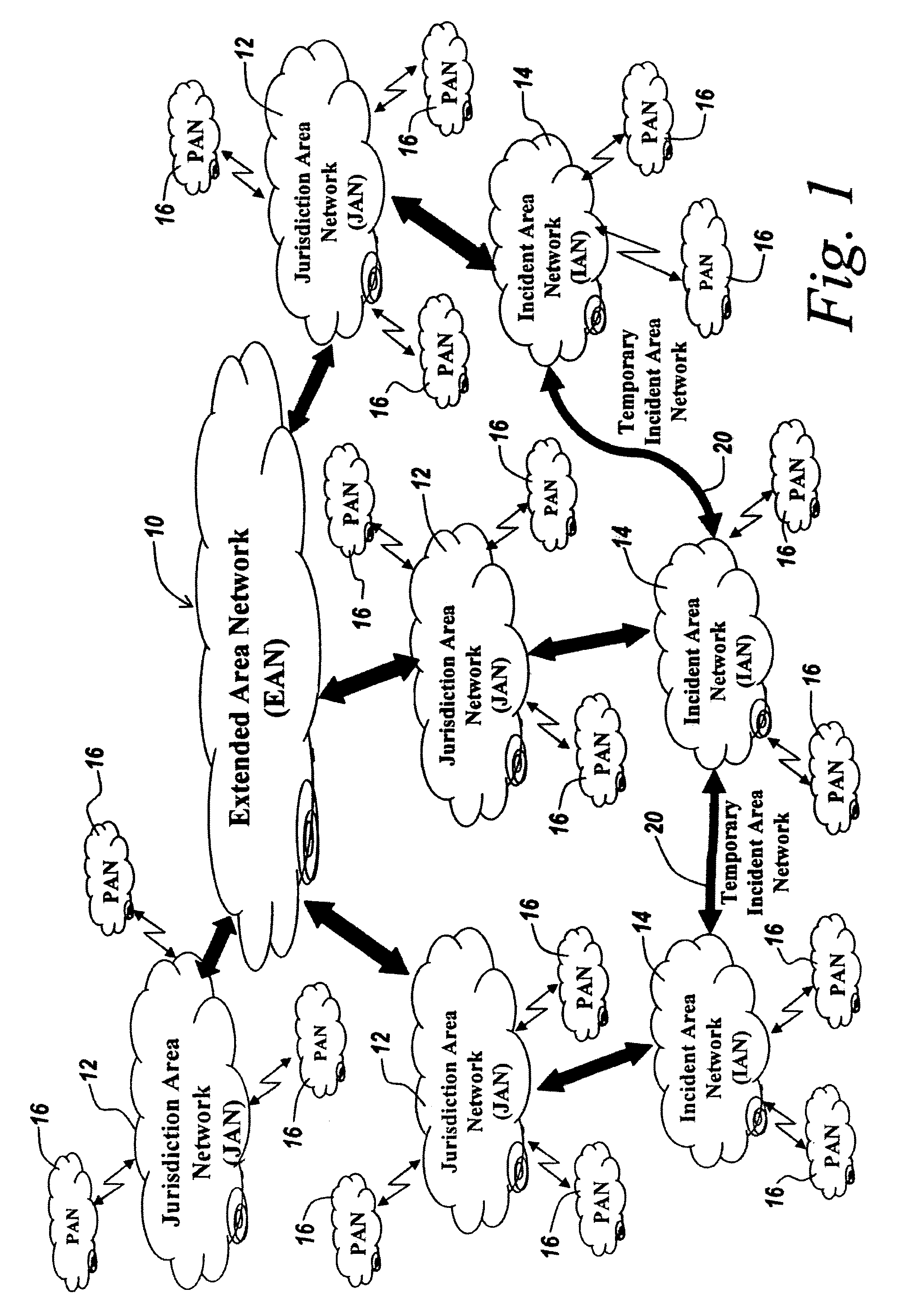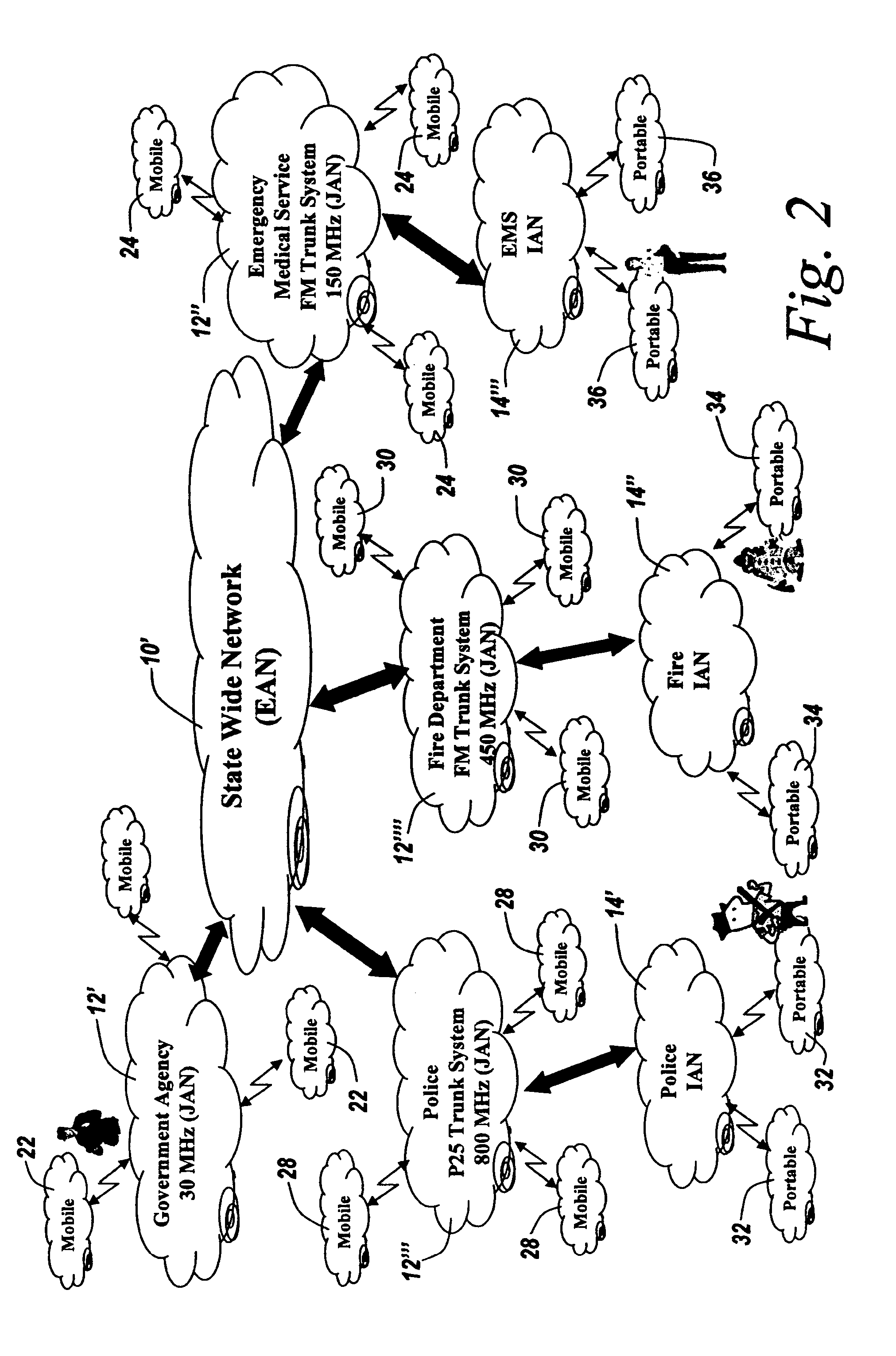Mobile temporary incident area network for local communications interoperability
a technology of local communication and incident area network, applied in the field of mobile communications, can solve the problems of incompatibility of first responder's communication units with those used by various, and inability to establish communication between all of the first responders at the scene. achieve the effect of increasing the rang
- Summary
- Abstract
- Description
- Claims
- Application Information
AI Technical Summary
Benefits of technology
Problems solved by technology
Method used
Image
Examples
Embodiment Construction
[0040]In order to facilitate the description of the subject invention, the following definitions are provided:
[0041]Extended Area Network (EAN)—The city systems are in turned linked with county, regional, state, and national systems or extended area networks.
[0042]Jurisdiction Area Network (JAN)—The JAN is the main communications network for first responders. It provides a communication path for all first responder's communication units within a specific agency. Examples of a JAN are the communication system used by the NH State Police that is different from the JAN communication system used by the Hudson Fire Department that is different from the communication system used by the US Border Patrol.
[0043]Incident Area Network (IAN)—An incident area network is a network created for a specific incident by the responding agency. This network is temporary in nature and comprises all of the first responders from a specific agency. For example, the Hudson Fire Department will create a IAN s...
PUM
 Login to View More
Login to View More Abstract
Description
Claims
Application Information
 Login to View More
Login to View More - R&D
- Intellectual Property
- Life Sciences
- Materials
- Tech Scout
- Unparalleled Data Quality
- Higher Quality Content
- 60% Fewer Hallucinations
Browse by: Latest US Patents, China's latest patents, Technical Efficacy Thesaurus, Application Domain, Technology Topic, Popular Technical Reports.
© 2025 PatSnap. All rights reserved.Legal|Privacy policy|Modern Slavery Act Transparency Statement|Sitemap|About US| Contact US: help@patsnap.com



